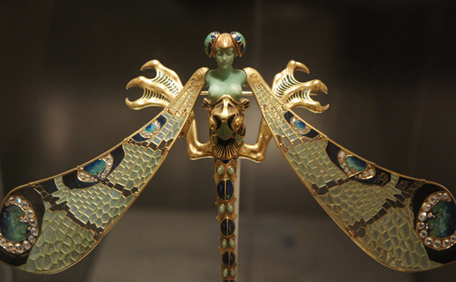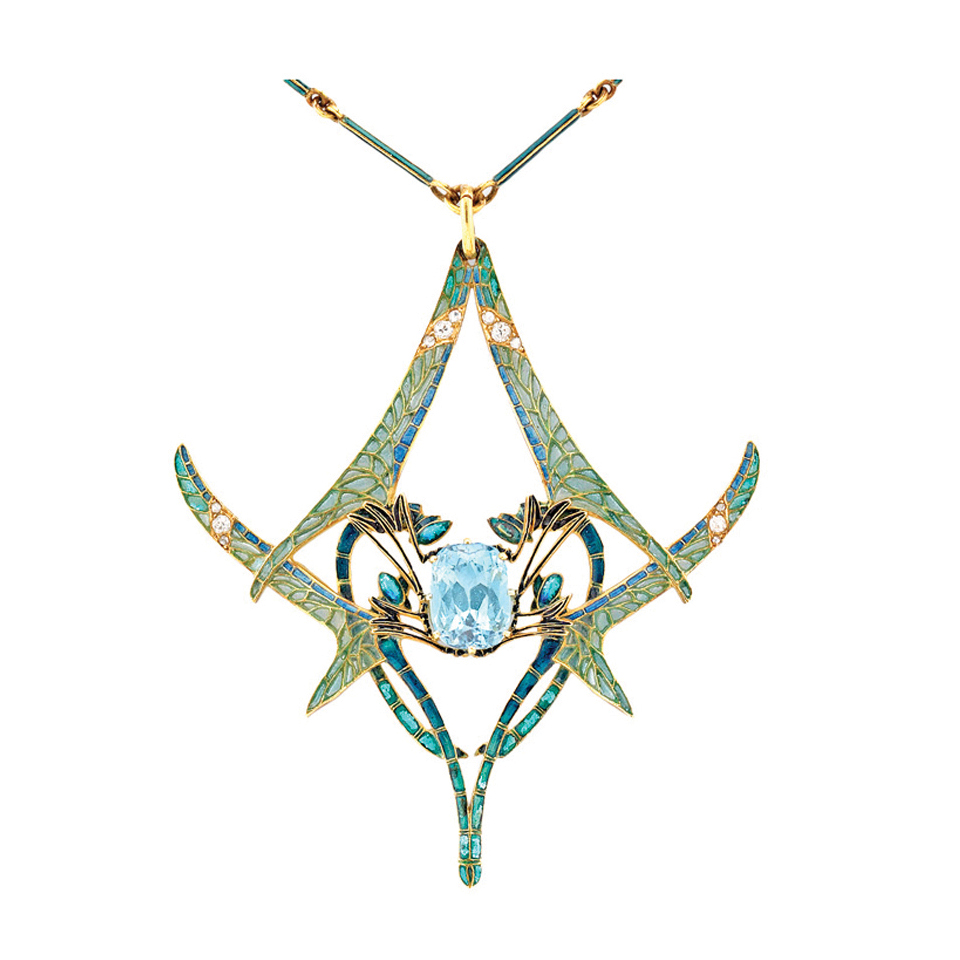A dragonfly darting through a cloudless sky is a sure sign that summer has arrived. Jewelry designers, long enchanted by this idyllic scene, have made charming creations that celebrate this beautiful creature.
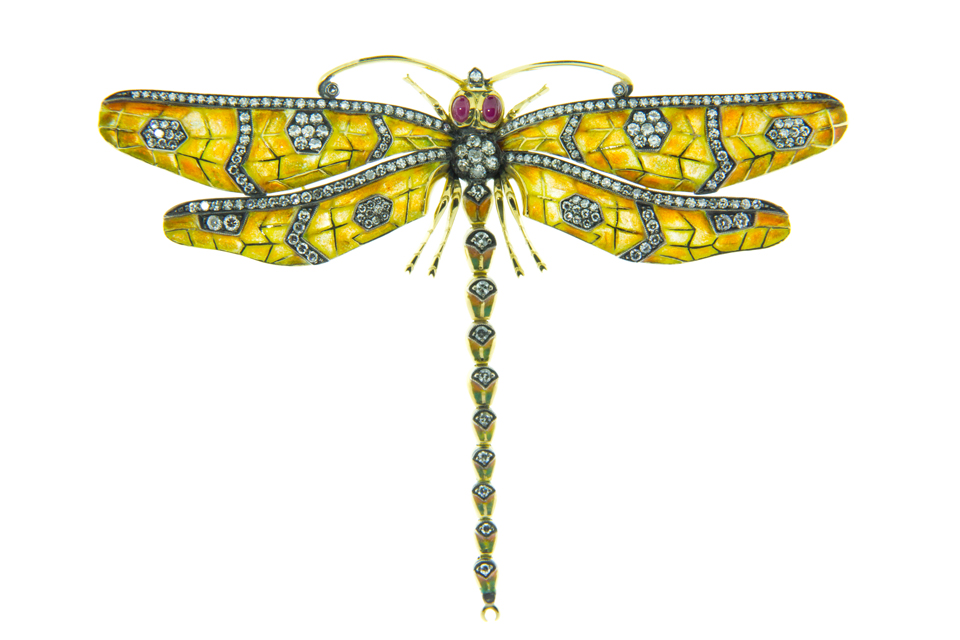
The delights of summer sparkle in this dragonfly necklace (it also doubles as a brooch). Courtesy of Sinork Agdere “Lord Jewelry”.
Shimmering yellow wings made using the plique-a-jour enameling technique, and 3.98 ct. of diamonds in its wings evoke long, lazy summer days.
A few facts about dragonflies: They have been flitting over earth for 325 million years. Current incarnations have two pairs of wings on each side of colorful stick-like bodies, six legs covered in stiff hairs, and extremely large eyes. Mosquitoes and other insects are their fare.
With its fantastical body, the dragonfly was a natural creature to be mythologized. It symbolized summer and autumn in Japan; samurai used it to represent skill and victory. The dragonfly stood for prosperity and harmony in China. Native Americans considered it to be the personification of purity and happiness.
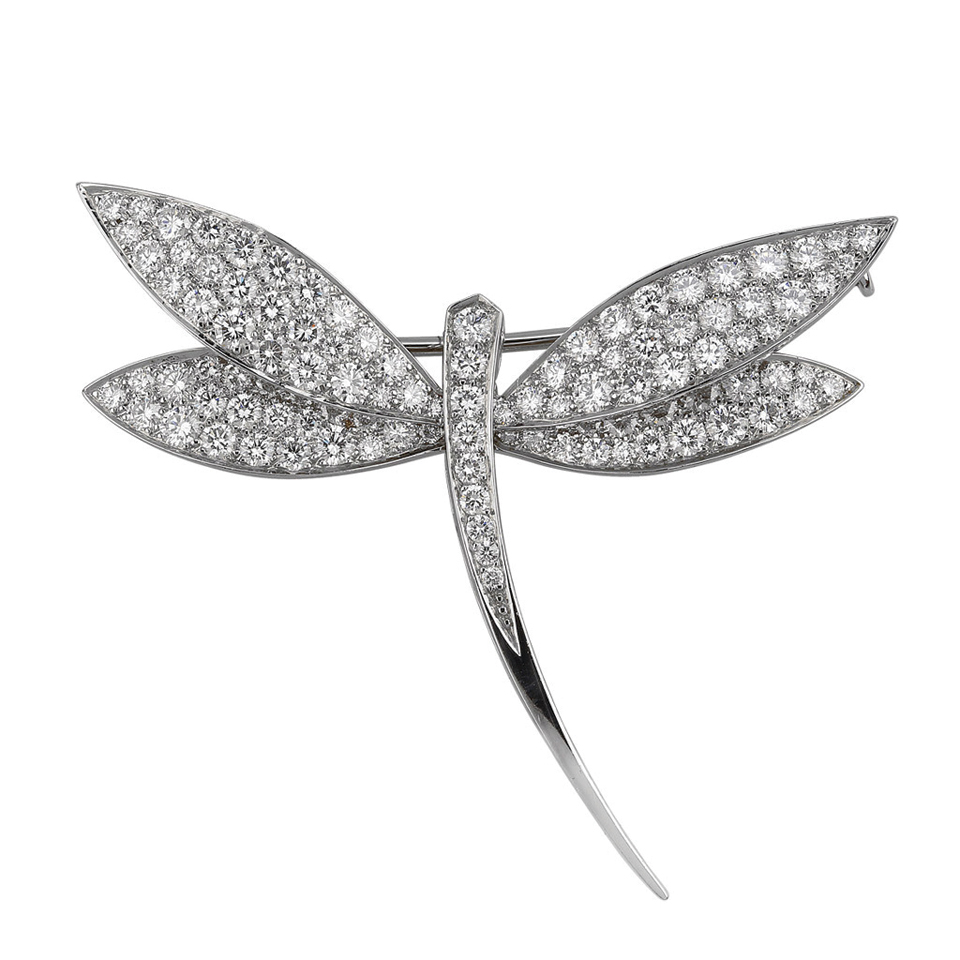
A few simple lines artfully executed make the Diamond White Gold Dragonfly Libellule Brooch by Van Cleef & Arpels. Its design is a study in understated elegance. Photo courtesy of 1stdibs.com.
Dragonflies were cast in darker roles in other cultures. An agent of Satan in European folklore, the dragonfly had chilling nicknames like the Devil’s Needle, Ear Cutter, and Horse Stinger (from the false belief that it was stinging them).
Swedes spun fables about dragonflies punishing lying children and foul-mouthed adults by sewing their eyes, mouth, and ears shut. In the southern parts of the United States, dragonflies were fabled “snake doctors,” able to heal wounded serpents.

A body made of vivid emeralds and eyes made of cabochon sapphires provide a breathtaking contrast. Photo courtesy of 1stdibs.com.
Alphonse Fouquet (1828 – 1911), one of the great jewelry designers of the Art Nouveau era, is believed to be the designer of this dragonfly brooch. Ornate details in the wings reveal the handiwork of master craftsmen.
Benevolent, malevolent, or an unusual creation of nature – you get to decide. While you’re making up your mind, enjoy a few more delightful interpretations of these agile fliers.
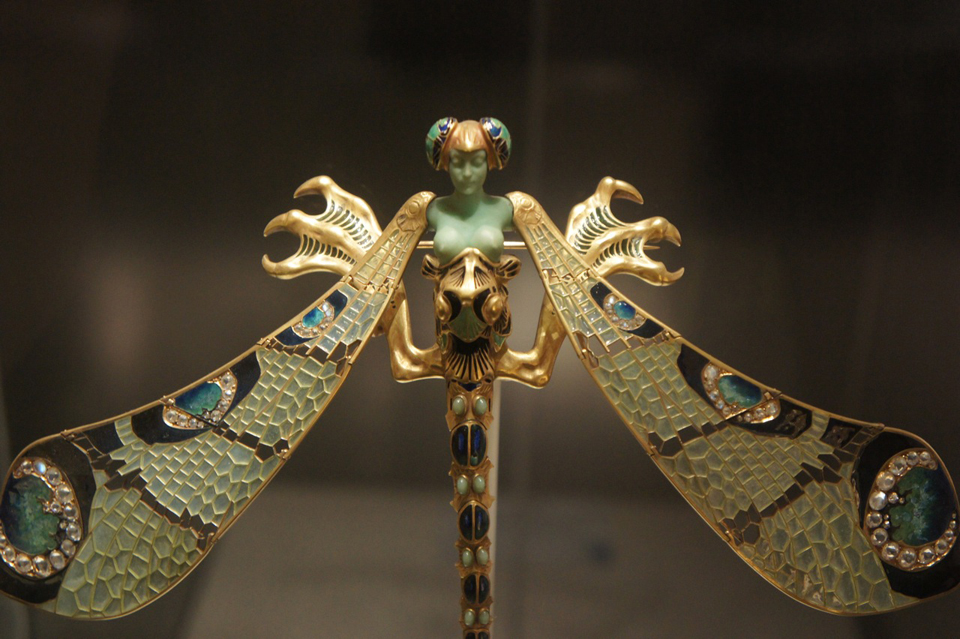
An artistic genius of many talents, the great designer Rene Lalique (1860 – 1945) was renowned for his masterpieces of Art Nouveau jewelry. Image by sprklg@Flickr.
Rene Lalique’s bold inventiveness is on display in this dragonfly corsage ornament: a sensuous – and helmeted – nude wields razor claws and giant wings. She is a blend of the erotic, the dangerous, and the strange. She may represent the sexuality and death; regardless, the unusual piece still elicits speculation and commentary.
Provocative imagery like this was particularly popular with courtesans and actresses of the era – the more bizarre, the better. Lalique was also fascinated with Japanese art, which often depicted disturbing creatures and favored similar color palates, and can be seen in this piece.
Spot the four opposing dragonflies in this necklace by looking for their bright blue heads at the cushion-shaped aquamarine in the center. Two of their tails form the shape of a heart; two form a letter “V”. Plique-a-jour wings are decorated with circular- and rose-cut diamonds.

A psychedelic explosion of color in these dragonfly earrings make them seem like they flew straight out of the 1960s. Courtesy of D’Orazio & Associates.
Jewelry designer Lydia Courteille used a painter’s palette of gemstones in her creation: diamonds, enamel, sapphires, amethysts, green garnets, tourmalines, and tanzanite.
An exotic creation that comes in a rainbow of colors, the dragonfly continues to enchant jewelry designers and aficionados. This means we can look forward to many more beautiful pieces that pay homage to it.
Dragonflies aren’t the only winged wonders that have entranced jewelry designers. Butterflies are colorful fliers that have long charmed artisans and aficionados.
Custom Field: Array
